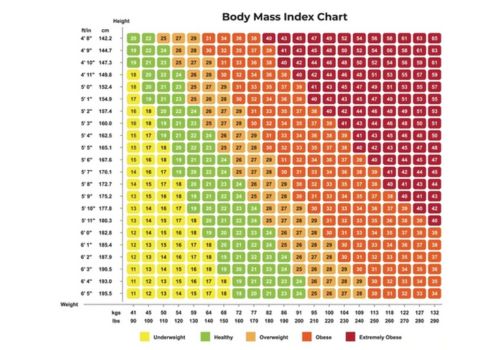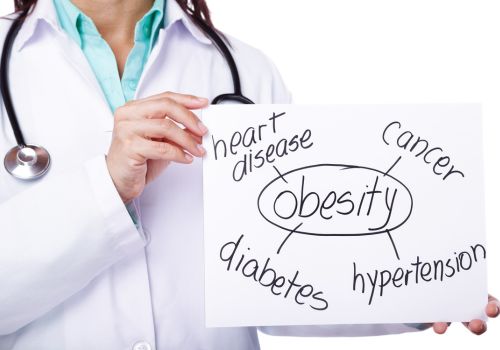Many readers are unaware of the fact that different obesity classes exist. This is important for several reasons. First, these levels can be used as diagnostic tools in relation to the risk of developing serious illnesses related to body weight. Such insight may also be invaluable for those who hope to better determine if they are classified as obese according to clinical standards. From Spatz we ask, how many classes of obesity are there and can these be used as predictive tools to determine related health risks?
Let’s first take a look at the relationship between BMI and obesity classes. We can then move on to analyse some of the characteristics associated with each level as well as the possible health risks.
Obesity Classes by BMI: An Overview
One of the most common ways to determine if one is at a healthy weight is a statistic known as body mass index (BMI). BMI simply a ratio between height and weight. As will be demonstrated in more detail below, higher BMI indices tend to be correlated with more severe cases of obesity. Here is a quick breakdown of BMI scores in relation to body weight:
- 18.5 or less: Underweight.
- Between 18.5 and 24.9: Healthy.
- Between 25.0 and 29.9: Overweight.
- Higher than 30: Obese to varying degrees.
Those who wish to learn more about calculating BMI scores can also refer to this previous Spatz3 article. Furthermore, feel free to refer to the BMI and obesity classes chart found below:

What are some risks attributed to obesity and how might these increase in relation to BMI? This is a critical question if you are concerned about your overall health.
The Health Implications of Chronic Obesity
There is a well-known link between obesity and a plethora of potentially serious health conditions. As you might have already guessed, the dangers steadily increase in accordance with higher BMI scores. Some comorbidities (related illnesses) include:
- Type 2 diabetes.
- Chronic inflammatory conditions.
- Hypertension and cardiovascular disease.
- Decreased circulation resulting in conditions such as gout, varicose veins and deep vein thrombosis (DVT).
- Mental health problems including anxiety, low self-esteem and depression.
So, how many classes of morbidity are there? What health dangers are associated with each discrete level? In order to adopt a healthier lifestyle and to enact the appropriate changes, it pays to develop a more in-depth understanding.
What are the Classes of Obesity?
Note that for the sake of brevity, we will not be discussing BMI scores that are considered to represent a healthy weight. We will therefore begin straightaway by examining those who have obtained a BMI score of 25 or higher.
Class 1
Class 1 obesity is defined as an individual who has been rated with a BMI of between 25 and 29.9. This is sometimes classified as “low-risk” obesity, as the chances of developing any of the medical conditions outlined above are low to moderate. However, this term does not signify that no dangers exist. Action should still be taken in order to reduce your body weight.
Class 2
Those who have been diagnosed with Class 2 obesity have a BMI that falls somewhere between 30 and 34.9. This condition may be labelled as “moderate” as health risks increase in correlation with higher levels of bodyfat. Those with Class 2 obesity will often be diagnosed with issues such as high blood pressure and/or cardiovascular disease. Note that Class 2 obesity may also be a important precursor for developing type 2 diabetes.
Class 3
A BMI from 35 to 39.9 is considered to be at a high risk in terms of both short- and long-term health effects. In this case, diet and exercise alone may no longer be sufficient. Individuals could instead opt for medical interventions such as determining if they are candidates for a gastric balloon. Many individuals with Class 3 obesity already suffer from one or more of the previously highlighted ailments.
Class 4
Out of all of the classes of morbid obesity, this is the most severe. Class 4 obesity (a BMI of more than 40) may lead to other seeming unrelated conditions including (but not limited to) early-onset osteoarthritis, stroke, gallbladder disease, fatty liver, and restricted mobility (which further exacerbates all other conditions).

What About the Impact of Childhood Obesity?
While we have just analysed obesity classes in relation to BMI in adults, what about children? Pediatric obesity classes are actually somewhat similar, as a child with a BMI of over 40 will likewise be diagnosed as a Class 4. Another disturbing observation is that up to one in four adults who were overweight as children are likely to die at a younger age due to issues related to their body weight.
How to Break the Cycle
While the consequences of being diagnosed as overweight are truly concerning, we need to remember that unlike many other health conditions, it may be possible to reverse some of the effects. The main point here is that it will be much more difficult to make proactive changes for those who are already classified as Level 3 or Level 4.
Having said this, even those who are morbidly obese can benefit from the latest medical advancements such as the Spatz3 adjustable gastric balloon. As this is also a non-surgical procedure, it may be practical for those who cannot undergo invasive surgery due to chronic health conditions.
Above all, never feel as if you have become trapped within any one of these obesity classes; there is always a way forward and a healthier lifestyle may be closer than you believe.


